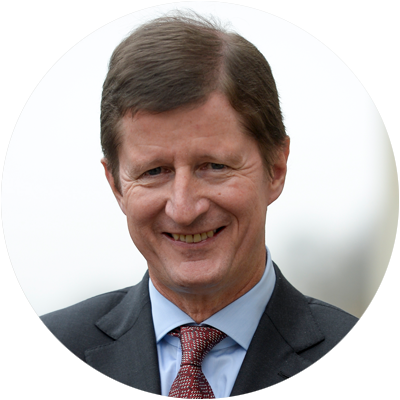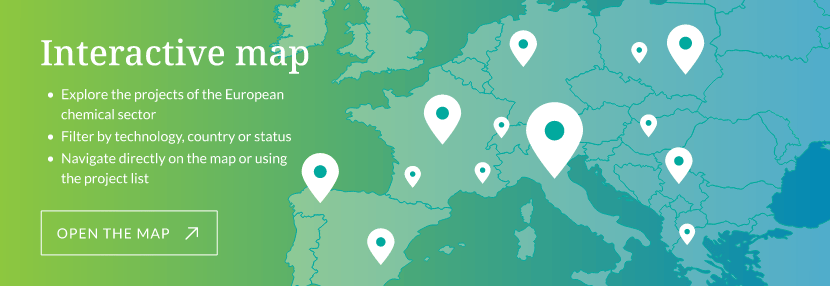Belgium
Key facts
Turnover
€74 billion
Capital Spending
€2.7 billion
Direct Employees
97,400
Number of companies
> 720
R&D Investment
€5.5 billion
National Contact
essenscia

Yves Verschueren
Managing Director
yverschueren@essenscia.be
CHEMICAL INDUSTRY SNAPSHOT
The beating of the Belgian industry
The chemical, plastics and life sciences industry is the industrial pillar of the Belgian economy. With a turnover of 74 billion euros and more than 97,400 direct and 220,000 indirect jobs, the sector is one of the most important industries in Belgium. It accounts for more than one third of all Belgian exports, 40% of the industrial value-added and two thirds of all private investment in research and development (R&D).
Though Belgium, with 11.6 million inhabitants, represents only 2.6% of Europe’s population, it’s the second most important exporting country for chemicals and pharmaceuticals within the European Union, with a share of 14%.On a per capita basis Belgium is the he world champion in the sales of chemicals and plastics and a European leader in new medicine development. As the number one sector in Belgium for export and innovation, the chemical, plastics and life sciences industry contributes significantly to the economic growth and prosperity of the country.
Forming a global hub
Enabling all other industrial sectors, chemicals and life sciences in Belgium are a central chemical hub in a globalised world. More than 75% of employment in the Belgian industry is by foreign-based parent companies.
Export champion
Chemicals, plastics and pharmaceuticalsare Belgium’s top export product, accounting for 37% of total Belgian exports. 80% of the production is exported, creating a positive trade balance. Neighbouring countries, and particularly Germany, are the main trading partners. But exports to the United States, to Japan and to emerging countries have significantly risen.
Clustering for efficiency
Belgium hosts a world-class chemical cluster at the port of Antwerp, where several of the world’s top chemical companies have major production sites. Lying in the centre of the Western European pipeline network, Antwerp is directly connected with all the major sub-clusters in Belgium – the Feluy-Seneffe-Manage triangle, Jemeppe-sur- Sambre, companies along the Albert Canal, Tessenderlo, Ghent and into the Ruhr district of Germany and Delta region in the Netherlands.
Combining expertise
Life sciences are mainly clustered in the Walloon-Brabant province east of Brussels near to universities, and around Antwerp. Ghent is home to a biotech valley which brings together world-class expertise in the field of medical, industrial and agricultural biotechnology. Together they make Belgium the health & biotech valley of Europe, with industry-leading expertise in R&D, biomanufacturing and distribution. Plastic and rubber processing companies are spread across the country.
Investing in research
The sector spent €5.5 billion on R&D 2021. About 70% of R&D expenditure is in-house. The balance, in the form of outsourced research, reflects close collaboration between companies and technology centres for boosting innovation. Chemicals and life sciences are the largest private investor in R&D, accounting for 65% of R&D spending by all manufacturing companies. During the past decade, R&D spent by the chemical and life sciences industry more than doubled, mainly driven by life sciences companies. However, industry spending on sustainable bio-based and green chemistry is increasing.
HOW ARE WE DOING?
Strengths
- Attractive location at the heart of industrial Europe and the Western European pipeline network
- Easy access to raw materials and export markets via important seaports – Antwerp-Bruges and NorthSea port Ghent– and high quality air cargo for pharmaceuticals from Brussels and Liège airport.
- A unique integrated cluster of chemical companies covering the whole value chain
- Competitive logistical platform with tailor-made tank storage terminals and distribution platforms
- Highly-skilled workforce ensuring world-class technical expertise for some key products
- Operational excellence and high safety standards
- World-class energy efficiency
- Strong collaboration with universities
- Unique network between companies, authorities, and customers to implement REACH and CLP
- Excellence in industrial and academic research and a unique academic and industrial collaborative network
- A wide choice of science parks with incubation and innovation centres
- A broad range of state-of-the-art sectoral competence centers to train, reskill and upskill employees, students and jobseekers
Weaknesses
- High energy costs
- Relatively high labour costs
- Ageing workforce and quest for new talent
OUR CONTRIBUTION TO A COMPETITIVE EUROPE
Seeking a sustainable future
The government of Flanders, the Northern part of Belgium, has prioritised cluster policy and commercialisation of research, defining innovation hubs in a bid to become a leading EU region.
Catalisti, the spearhead cluster for innovation in chemicals & plastics, has been launched by essenscia and involves more than 100 companies and all Flemish universities, with the support of the Flemish government. Its mission is to accelerate the transition towards sustainability by promoting open innovation, identifying, stimulating and catalysing innovations. It focuses on renewable chemicals, putting waste and side streams to use, intensifying processes and advancing sustainable products. To that end, the spearhead cluster supports small, medium and large enterprises and knowledge institutions in defining, setting up and implementing innovation projects.
Catalisti operates from BlueChem, the first incubator for sustainable chemistry in the Benelux, and coordinates the Moonshot-initiative: a long term programme for groundbreaking climate innovations to make the industry CO2 circular and low carbon.
In Wallonia, the southern part of Belgium, the Walloon government focuses on industrial policy, including sustainable chemistry and biotechnology. GreenWin, its sustainable chemistry cluster brings together small and large enterprises, universities, research centres, training organizations and communities. GreenWin is organised around the life cycle of materials: development of sustainable products and materials; sustainable integration and implementation of materials and treatment and making best use of waste and waste-water. Wallonia was designated the EU executive among six “model demonstrator regions” to reinforce its strategy to lead in sustainable chemical production.
A second cluster, BioWin, brings together more than 100 health biotechnology and medical technology companies. Another cluster is PlastiWin, the Walloon business cluster for the plastics industry.
The sector is also strongly involved in Circular Flanders and Circular Wallonia, both initiatives to accelerate the transition towards a circular economy.
Take a “low-carbon industrial project journey” through Europe: discover our map
Low-carbon technologies projects: mapping investments and projects of the European chemical industry
